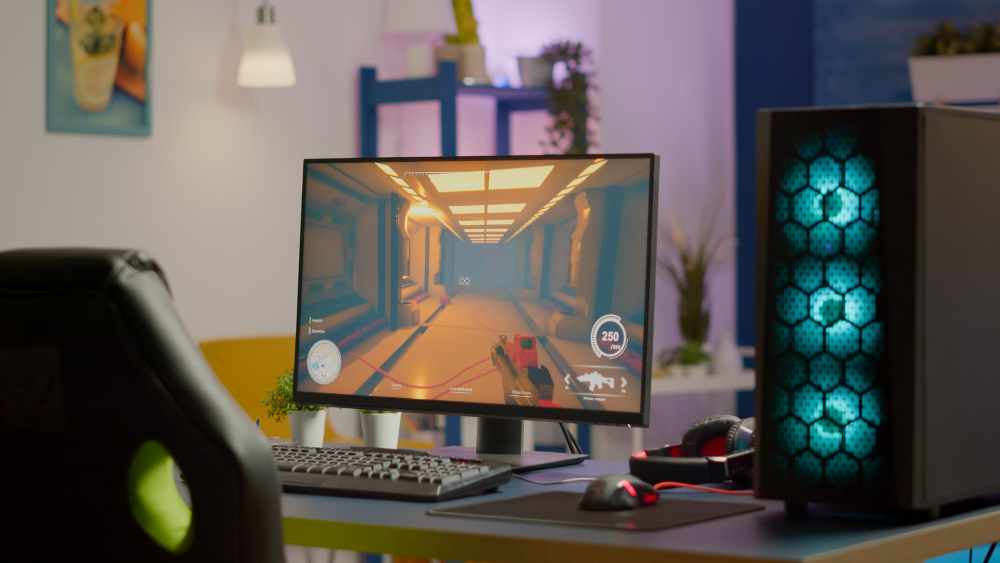As a passionate gamer, there is nothing more frustrating than encountering issues with your gaming PC. Whether it is a sudden crash, lagging gameplay, or performance issues, these problems can significantly hinder your gaming experience. However, before you panic and start contemplating expensive upgrades or replacements, it is essential to follow a systematic troubleshooting approach to identify and resolve the underlying issues.
To easily diagnose and fix common gaming pc problems by yourself at home, follow these easy steps recommended by Gaming PC Repair Specialists. It will help you save money, time, and frustration so you can get back to enjoying smooth and immersive gaming sessions.
How To Fix Common Gaming PC Problems?
Step 1: Check Hardware Connections and Power Supply
The first step in troubleshooting your gaming Pc is to ensure that all hardware connections are secure. Start by checking the power cables, RAM modules, graphics card, and other peripheral connections. Loose connections can cause intermittent issues and impact overall system performance.
Additionally, check your power supply unit (PSU) to ensure it is supplying enough power to your components. Insufficient power can lead to instability and crashes during demanding gaming sessions.
Step 2: Monitor Temperatures
Overheating is a common problem that can affect gaming PCs, especially during resource-intensive gameplay. Use monitoring software to keep an eye on your CPU and GPU temperatures. Excessive heat can lead to throttling, performance drops, and even system shutdowns.
If you notice high temperatures, clean your PC’s internal components, ensure proper airflow, and consider upgrading your cooling system if necessary. Investing in additional case fans, a better CPU cooler or liquid cooling can help keep temperatures in check.
Step 3: Upgrade Graphics Drivers
Computer Repair Specialists in Manchester explain that outdated or incompatible graphics can cause various gaming-related issues. Therefore, you must ensure that you have the latest drivers installed for your graphics card. Visit the manufacturer’s website or use their official software to download and install the most up-to-date drivers.
Regularly updating your graphics drivers can optimize performance, fix compatibility issues, and enhance stability during gaming sessions.
Step 4: Scan for Malware and Viruses
Malware and viruses can severely impact your gaming PC’s performance and security. Run a comprehensive scan using reputable antivirus software to detect and remove any malicious programs. Keep your antivirus software up to date to protect against emerging threats.
Step 5: Optimize Game Settings
Sometimes, performance issues can be attributed to in-game settings that are too demanding for your system. Adjusting the graphics settings, such as reducing the resolution, disabling certain effects, or lowering the text quality, can significantly improve performance without sacrificing visual appeal.
Experiment with different settings until you find the right balance between performance and visuals for each game.
Step 6: Perform System Cleanup and Maintenance
Over time, your gaming PC can accumulate unnecessary files, temporary data, and other clutter that can impact performance. Regularly perform system cleanup tasks such as disk cleanup, removing unnecessary programs, and managing start-up items.
Optimizing your PC’s storage by defragmenting the hard drive or utilizing solid-state drivers (SSDs) can also boost overall system performance.
Step 7: Check for Background Processes
Background processes and applications can consume system resources leading to reduced gaming performance. Use the Task Manager (Ctrl + Shift + Esc) to monitor and close unnecessary processes running in the background. Pay attention to resource-intensive applications and consider closing or disabling them while gaming.
Step 8: Test Hardware Components
If you have followed all the previous steps and are still experiencing problems, it is time to test your hardware components. Run diagnostics tools or stress tests to check the integrity and stability of your CPU, GPU, RAM, and Hard drives. These tests will help you identify if there is any faulty hardware that may be causing the issues.
Step 9: Seek Professional Assistance
If nothing works and you are not comfortable performing advanced troubleshooting steps, it is advisable to seek professional assistance. Experienced technicians at Tech Zones can help you diagnose and fix complex hardware or software issues. Our technicians can also provide you with recommendations for hardware updates or optimizations based on your specific gaming needs.
Conclusion
Diagnosing and resolving gaming PC problems can be a challenging task but by following this step-by-step gaming PC troubleshooting guide, you will be equipped with the knowledge and techniques to identify and fix common issues. In case you are not confident enough to take the advanced troubleshooting steps yourself, you may contact us for the best gaming pc diagnosis and repair services.


